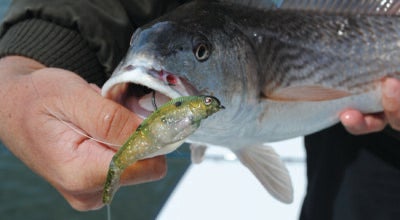The Extension Corner: A consumer guide to safely preparing a turkey
Published 2:40 pm Friday, November 16, 2018
It’s hard to believe the holidays are just around the corner. Most families will be preparing turkey for the upcoming Thanksgiving holiday. Unfortunately, this traditional meat can also be a food safety nightmare as turkey is linked to outbreaks of salmonellosis and campylobacteriosis, illnesses caused by bacteria sometimes found in poultry. By following proper steps, you can reduce the risk of food-borne illness at your holiday gathering. Proper handling while thawing, preparing and cooking your bird are essential.

Lori Ivey
Here is the latest information about safely preparing the turkey for your holiday dinner.
When purchasing fresh or frozen, allow approximately one pound per person. If purchasing fresh, buy your turkey only one or two days before you plan to cook it.
Keep it stored in the refrigerator until you are ready to cook it. Place the turkey on a tray or in a pan to catch any juices that may leak.
Do not buy fresh pre-stuffed turkeys. If not handled properly, any harmful bacteria that may be in the stuffing can multiply very quickly. Frozen turkeys should be kept frozen until you’re ready to thaw it. Turkeys can be kept frozen in the freezer indefinitely; however, cook within one year for best quality.
To reduce food safety risks while thawing, properly thaw with one of three methods recommended by USDA — refrigerator, cold water or microwave. If you thaw the turkey in the refrigerator, plan ahead as it may take three-four days to fully thaw (cooking a partially thawed turkey increases your risk of food poisoning.) Allow 24 hours of defrost for every 5 pounds of turkey. Approximate refrigerator thawing times for a whole turkey are: 4 to 12 pounds — 1 to 3 days; 12 to 16 pounds — 3 to 4 days; and 16 to 20 pounds — 4 to 5 days. You can save time by thawing your turkey in cold water. When thawing in cold water, allow about 30 minutes per pound.
Be sure the turkey is in a leak-proof plastic bag to prevent cross-contamination and to prevent the turkey from absorbing water, resulting in a watery product. Submerge the wrapped turkey in cold tap water. Change the water every 30 minutes until the turkey is thawed.
Cook the turkey immediately after it is thawed. Approximate cold water thawing times are: 4 to 12 pounds — 2 to 6 hours; 12 to 16 pounds — 6 to 8 hours; 16 to 20 pounds — 8 to 10 hours; 20 to 24 pounds — 10 to 12 hours. Remember you must change the cold water every 30 minutes. A turkey thawed by the cold-water method, should be cooked immediately.
For microwave thawing, follow the microwave oven manufacturer’s instruction when defrosting a turkey. Plan to cook it immediately after thawing because some areas of the food may become warm and begin to cook during microwaving. Holding partially cooked food is not recommended because any bacteria present wouldn’t have been destroyed. A turkey thawed in the microwave must be cooked immediately.
Thawing on the counter is not recommended because it provides an ideal environment for bacterial growth on the outer edges of the turkey. Regardless of the thawing method, to minimize cross-contamination risks, the frozen turkey should be left in the original package. Plastic can be wrapped around the outside to keep meat juices from dripping on ready to eat foods below, or the bird can be placed in a pan to catch the juices. Important: remove the giblets from the turkey cavities after thawing and cook them separately.
Now you’re ready to cook your turkey. Set your oven temperature no lower than 325 degrees F. Place turkey or turkey breast on a rack in a shallow roasting pan that is large enough for the turkey. Color is not an indicator of safety or doneness.
The only way to know if your turkey is done is to use a tip-sensitive or digital food thermometer. Check the internal temperature of the turkey in the innermost part of the thigh and wing and the thickest part of the breast with a food thermometer. It should read at least 165 degrees F. Be careful not to touch the bone when checking temperature.
For more even cooking, it is recommended that you cook stuffing outside the bird in a casserole dish. The internal temperature of the stuffing must reach 165 degrees F using a tip sensitive or digital food thermometer. For easier carving, let the turkey stand for 20 minutes after removing from the oven to allow the juices to settle.
Always wash hands, utensils, the sink and anything else that comes in contact with raw turkey and its juices with soap and warm water.
Now, what do you do with the leftovers from your Thanksgiving Day meal?
Here are a few tips to help you safely store your leftovers. Discard any turkey, stuffing and gravy left out at room temperature longer than two hours. Divide leftovers into smaller portions. Refrigerate or freeze in covered shallow containers for quicker cooling. Use refrigerated turkey, stuffing and gravy within three to four days. If freezing leftovers, use within two to six months for best quality.
Cooked turkey may be eaten cold or reheated, but follow these recommendations if you want to reheat it. Set the oven temperature no lower than 325 degrees F. Reheat turkey to an internal temperature of 165 degrees F. Use a food thermometer to check the internal temperature.
To keep the turkey moist, add a little broth or water and cover. If reheating in the microwave, cover your food and rotate it for even heating. Allow standing time. Check the internal temperature of food with a food thermometer to make sure it reaches 165 degrees F. Consult your microwave oven owner’s manual for recommended times and power levels.
If you have questions about information in this article, contact me by calling (704) 983-3987 or email lori_ivey@ncsu.edu. You can also call the USDA Meat and Poultry Hotline 10 a.m.-4 p.m. Monday-Friday at 1-888-674-6854. The hotline is open 8 a.m.-2 p.m. Thanksgiving Day.
Lori S. Ivey is the county extension director with the Stanly County office of N.C. Cooperative Extension. Call (704) 983-3897 or email lori_ivey@ncsu.edu




